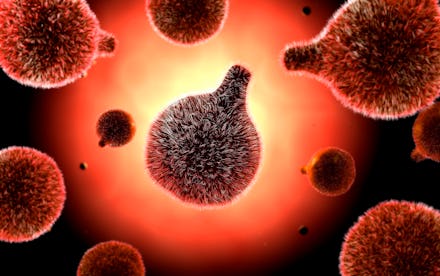Scientists Just Discovered the Key to Fighting One of the World's Deadliest Diseases

The news: When flu season approaches, we do something counterintuitive: Infect ourselves with the virus — or technically, a modified and weakened version of the virus. But vaccination works, and since the 1940s it's kept millions of people healthy by coaxing our immune systems into developing antibodies that protect us against infection. Unfortunately, the trick doesn't work against one disease: malaria, which continues to kill roughly 1.2 million people worldwide each year.
But scientists at the Seattle Biomedical Research Institute recently made a potentially game-changing discovery: By genetically modifying the malaria parasite and removing the genes it needs to multiply, they can create a noninfectious GMO parasite. Published in ScienceDaily, the researchers found that when these innocuous parasites are introduced in people, the immune system is prompted to develop resistance against the disease. This could be the new, groundbreaking malaria vaccination.
Unlike antimalarials, which work by killing malaria parasites in the body, treating people with a genetically modified version of the parasite before infection would alert their immune system to the presence of the parasite and render them resistant to future infection. Scientists have been experimenting with genetically modifying malaria parasites for a few years. But even after opening up the genome and removing two of its genes, the parasite could still infect people. The current strain has three genes removed — a "triple punch," according to lead researcher Sebastian Mikolajczak, which effectively prevents the parasite from infecting humans.
The background: Like bacteria, malaria parasites develop resistance over time to the drugs designed to kill them. Repeated treatments for malaria consume, on average, 1.3% of the annual gross domestic product of the countries in which the disease flourishes. In some parts of sub-Saharan Africa where the disease is the worst, families spend as much as 25% of their income on malaria drugs.
Image Credit: WHO
In the 1990s, as mosquitoes and the parasites they carried became increasingly resistant to insecticides and antimalarial drugs, reported cases of malaria across the globe skyrocketed, even in areas the World Health Organization had previously declared malaria-free. Thanks to moderate improvements in socioeconomic conditions, the use of new drugs and bed nets treated with more powerful insecticides, the number of reported cases of the disease dipped in the 2000s.
Artemisinin — a powerful antimalarial isolated from Chinese wormwood, first discovered as part of a massive government project during China's Cultural Revolution — has been recognized globally as the standard malaria treatment. But it has never been cheap, and the price has fluctuated widely, ranging from $120 per kilogram to $1,200 per kilogram between 2005 and 2008.
So in 2013, when University of California, Berkeley bioengineer Jay Keasling developed a method to create the drug artificially using genetic modification, the Bill & Melinda Gates Foundation partnered with him to offer the drug for less. Although the treatment has become more widely available, the disease remains difficult to eliminate. Scientists are concerned the parasite will soon outsmart even this powerful drug.
Why it matters: Malaria remains a global threat. In 2012, the disease hit more than 200 million people and killed nearly 630,000. Of those who died, 90% were in sub-Saharan Africa and more than three-quarters were children under age 5. Current tools and treatment for malaria, from bed nets to antimalarial drugs, are insufficient to eliminate the disease.
While scientists need to complete more tests and clinical trials of the GMO vaccine, they are one step closer to creating a malaria vaccine.
WHO map of current locations of malaria vaccine clinical trials. Image Credit: Google Maps